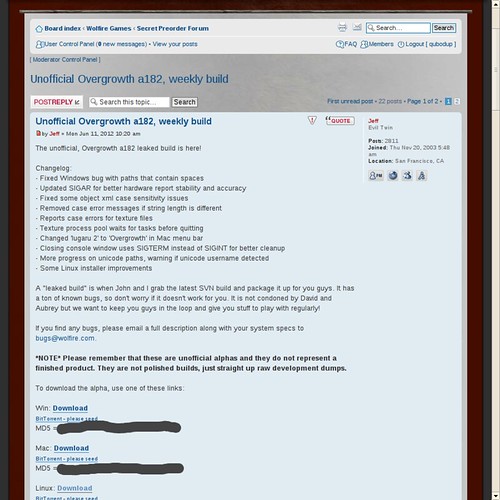
Featured Blog | This community-written post highlights the best of what the game industry has to offer. Read more like it on the Game Developer Blogs.
3 Examples of Open Development Marketing in Action
How do Woflire (Overgrowth), Unknown Worlds (Natural Selection 2) and Frictional Games (Amnesia) market their games by using the development process itself?


Open development graph: being open about your developments makes noise, grows the community and lets you meet new people which in the end all interact which each other.
Image: Open development graph: being open about your developments makes noise, grows the community and lets you meet new people which has potential to interact which each other.
Today, Data Realms (Cortex Command) started sharing their backlog (aka ToDo-list) with the public. This made me want to re-capture some methods of being open about your game development and using this for marketing.
1. "Leak" alphas to pre-orderers
When your early version already has re-play value, allowing people to pre-order your games and to play your alpha versions is one of the best things you can do.

Image: Wolfire's Overgrowth alpha "leaks" get distributed via their preorder forum, which you can only see if you preordered the game.
2. Show off remaining tasks and bugs
Progress bars are beauty in players' eyes. Simply giving players read (and ideally write) access to your internal bug tracker allows super-fans to stalk you with no additional efforts on your side.

Image: Natural Selection 2's roadmap progress is being shared by Unknown Worlds live, directly on the game's homepage.
3. Share the knowledge that powers your design
When a game strongly depends on its plot, it often becomes hard for the writers and designers to let players read or play the story before the project is finished. Even in these cases there is still a lot available in the designers' heads that can be shared spoiler-free: Instead of letting the player experience an in-game plot-twist prematurely (before the game is released), you can teach them about how plot twists are constructed and examine examples of plot twists in existing games.

Image: Frictional Games shares thoughts about game and story design in their "Narrative not a game mechanic?" article.
Afterword
This short article is based on some old slides I used at a talk at HTW Berlin years ago. This compact version shows how some of these practices are actually visible on the websites of the projects.
I myself work at Joyride Labs on a Linux/OSX/Windows game. Our engine code is open source, our bug tracker is completely public, our pre-release versions (that exclude the story mode) are available for download for free.
Are there any other noteworthy examples you would like to share? Please do so in the comments.
Read more about:
Featured BlogsAbout the Author(s)
You May Also Like









